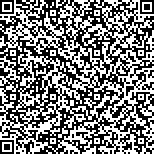下载中心
优秀审稿专家
优秀论文
相关链接
摘要

地物以其固有的特性反射、吸收、辐射和透射电磁波。不同地物表面对不同波长的电磁波反射/辐射/散射特性不同,成为利用遥感手段进行目标物探测与识别的理论基础,而地物波谱数据库的建成对定量遥感建模、地表参数反演及环境生态监测等具有重要作用。近年来,国内外各研究机构已建成部分地物波谱数据库,通过收集典型地物波谱数据,记录长期积累且相对稳定的波谱信息及其配套参数,支持地物分类、目标识别等领域的研究。本文综述了国内外主要地物波谱数据的建库历程,阐述了波谱数据库在各专业领域的主要应用成果,分析比较现有的国内外波谱数据库平台在波段覆盖、地物类型、配套参数及共享方式的特点及不足。在此基础上,针对波谱数据库在建设中存在的数据管理分散、测量质量控制和配套参数的标准规范不完善、数据利用效率不充分等问题,给出了初步建议。最后,探讨各学科对波谱数据库平台的应用需求,并对波谱数据库建设重点将面向全波段、多尺度、多时相的通用型知识库的发展趋势进行展望。
A spectrum is the distribution of electromagnetic radiation that has been reflected, emitted, or transmitted from ground objects because of their inherent physical characteristics. Remote sensing measurements provide a solid theoretical basis for applications such as target detection and identification fields considering that different materials possess distinct abilities for reflection, emission, and scattering mechanisms over different wavelength ranges. To support such studies, a spectral library is necessary for quantitative remote sensing modeling, land surface parameter inversion, and ecological environment monitoring. For nearly half a century, domestic and international research institutes have designed various spectral libraries by assembling spectral data of typical materials. These spectral libraries include a long-term, reliable, accumulative observation for a certain period and indispensable standard ancillary data. Such spectral data are essential resources for ground cover classification and target identification.
This study reviews the history of the development of spectral libraries by analyzing and comparing each spectral library with those of different wavelength ranges, types, ancillary data, and resources. The applications of two kinds of spectral libraries for different disciplines have been summarized. In this study, the general spectral library refers to a database with more comprehensive and abundant ground objects, including the United States Geological Survey Spectral Library, Advanced Spaceborne Thermal Emission and Reflection Radiometer Spectral Library, and Spectral Database System of Typical Objects in China. Meanwhile, the professional spectral libraries that were established focus mainly on the specific disciplines.
Comparison results reveal that spectrum data are relatively insufficient in the microwave band because previous research focused more on visible and near-infrared bands during the last century, especially on geological and ecological applications. This observation can also account for the over whelming quantity of minerals, rocks, and crops spectral data in existing data bases. However, most of the available spectra data that exist still exclude canopy or urban grassland spectra, although Nonetheless, vegetation spectra data have been considerable. Based on the research demand investigation for spectral library, the study should mainly focus on data management, quality control standard in measurements, and data utilization efficiency.
The establishment and full sharing of a comprehensive spectral library are crucial steps for domestic research. The waveband and the spatial and temporal gradients of the ground objects present the issues for accurate classification and identification applications. Thus, the full-wave band, spatial scales, or phenological information are significant in the completion of future spectral libraries.

